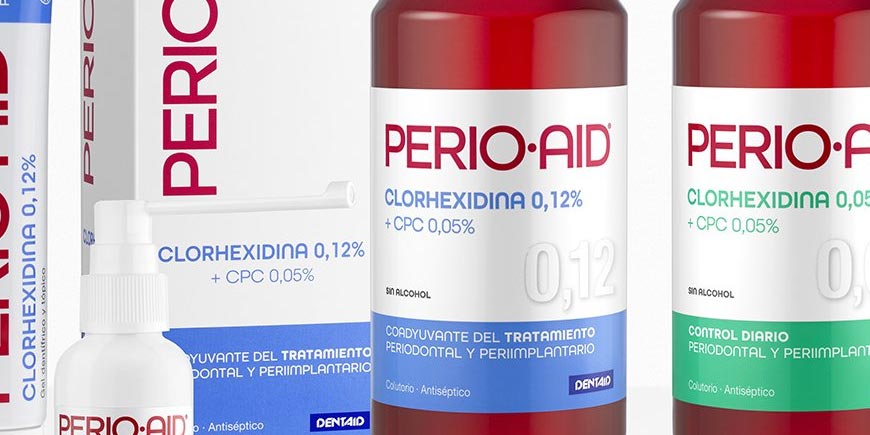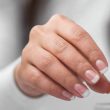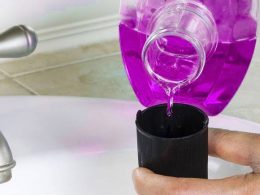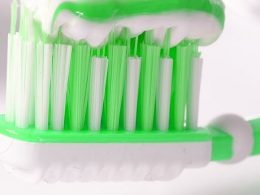Table of Contents
Chlorhexidine (CHX) is a disinfectant and antiseptic that has traditionally been used to disinfect the skin before surgery and to sterilize surgical instruments. It may be used both to disinfect the skin of the patient and the hands of the healthcare providers.
Nowadays it is also used for cleaning wounds, preventing dental plaque, treating yeast infections of the mouth, and to keep urinary catheters from blocking. It is used as a liquid or powder.
Chlorhexidine came into medical use in the 1950s. It is available over the counter (OTC) in the United States. It is on the World Health Organization’s list of essential medicines. In 2017, it was the 286th most commonly prescribed medication in the United States, with more than one million prescriptions.
Chemical Structure
This compound is a strong dicationic base at pH above 3.5 with two positive charges at each end of the hexamethylene bridge, which makes it extremely interactive with anions.
CHX is more stable in the salt form and the most common preparation is the digluconate salt due to its high solubility in water.
Dental Use
CHX is one of the most commonly prescribed antiseptic agents in the dental field.
It has a long-lasting antibacterial activity with a broad-spectrum of action and it has been shown to reduce plaque, gingival inflammation and bleeding. Its use is considered a powerful adjuvant to mechanical oral hygiene (brushing and flossing), especially in those cases in which it cannot be performed correctly.
Available as mouthwash, gel, aerosol, spray and disks, CHX is considered a safe compound, with minimal and transitory local and systemic side effects. Data support its periodic use as an adjuvant to normal brushing and flossing in subjects unable to maintain proper oral hygiene due to physical and/or mental impairment, or lack of motivation, or decreased salivary rate.
CHX is also a useful alternative to mechanical oral hygiene procedures in those cases in which they are contraindicated, for example, after a surgical procedure, or as a preoperative rinse before procedures in which use of a dental dam is not possible. Also, it is used in Endodontics during the disinfection of root canals.
Commercial Presentations
Although they may vary depending on your country of residence, among the most common and internationally distributed commercial brands of chlorhexidine gluconate for mouthwash, we find: Dentohexinm, Paroex, Peridont, PERIO-AID, Peridex, PerioChip, Corsodyl and PerioGard; among others.
Specific Indications
To be more precise, below we list the clinical situations in which we usually indicate this antiseptic:
- Adjuvant to the mechanical control of oral biofilm.
- Prevention and treatment of gingivitis, periodontitis, peri-implant mucositis and peri-implantitis.
- Helper in scaling and root planing.
- Patients at high risk of caries, root caries and polycaries.
- Pre and post surgeries.
- Its use in gel, associated with a surgical toothbrush, reduces the possibility of complications in the healing period and minimizes the risk of infections.
- To decrease plaque formation and improve gingival health around implants.
- After extractions, reduces the risk of alveolitis.
- Before or during clinical prophylaxis, it significantly reduces inflammation and bleeding.
- Immunosuppressed patients with oral complications.
- Patients undergoing radiotherapy or chemotherapy treatment.
- To decrease the recurrence and severity of oral ulcers.
- Patients with difficulties to perform proper mechanical hygiene (physical and mental limitations).
- In medically compromised patients, to improve plaque control and to prevent complications.
- In Orthodontics to reduce plaque and improve gingival health.
- Patients with removable prostheses.
- Treatment of oral halitosis.
Posology
CHX rinses are recommended after brushing with CHX-based gel. It is advisable not to rinse with water immediately after rinsing with CHX, as it can enhance the bitter taste.
- Dosage in Active Periodontal Treatment (CHX 0.12%) Rinse 2 times a day for 30 seconds with 15 ml of solution (morning and evening after brushing); for a period of between 15 days and 1 month depending on the clinical picture. For oral irrigations (Waterpik) it can be used diluted in water in the proportions 1:1, 2:1 or 5:1 of water and mouthwash, respectively.
- Maintenance Dosage (CHX 0.05%) Rinse twice a day for 30 seconds with 15 ml of solution (morning and night after brushing). It can be used long-term under professional supervision.
- As a Pre-Surgical Antiseptic Rinse 15 ml for 30 seconds before the intervention.
- As a Post-Surgical Antiseptic During the first 7 days after the intervention, rinse 15 ml, for 30 seconds, every 12 hours.
Mechanism of Action
It prevents the formation of new acquired film, reducing the adsorption of salivary glycoproteins on the tooth surface, by blocking free acid groups; such as sulfates, carboxyls and phosphates.
Prevents bacteria from binding to the already existing acquired film, through negative groups on its cell surface (eg, teichoic acids).
Disrupts the structure of the existing bacterial plaque. CHX displaces calcium from the sulfate groups in the plaque and thus disrupts its structure, preventing bacteria from binding to the acquired film.
Interactions
The CHX molecule can be totally or partially inactivated when the galenic formulation is not suitable or when it is combined with sodium fluoride in the same formula.
Another important interaction is that of CHX with sodium lauryl sulfate, an excipient used in many toothpastes, so it is recommended to wait at least 30 minutes after brushing, to use the CHX.
Side Effects
Its most common adverse effect is brown pigmentation in teeth, some restorative materials, and mucosa; mainly on the back of the tongue. Pigmentation or discoloration can be caused by the interaction between the CHX salts in the mouth and the tannins present in some foods (coffee, tea, wine, etc.).
Even so, in the vast majority of cases, the coloration does not seem to penetrate beyond the surface, so it can be easily removed with professional prophylaxis. The presence of dental discolorations can be a good indicator of compliance with treatment by the patient.
Another frequently reported side effect is taste disturbance, which could be reduced by avoiding rinsing with water after applying the CHX rinse. This effect disappears completely once the treatment is finished.
Increased supragingival stone deposition has also been reported in some individuals. These stones seem to have a different composition with respect to the usual ones and are easily eliminated.
Other possible unreported adverse events are the appearance of flaking and irritation in the mucosa, especially at high concentrations of CHX, which disappear when treatment is stopped.
Toxicity
Since CHX is almost not absorbed from the gastrointestinal tract, accidental ingestion of the solution will rarely produce systemic effects or allergic reactions caused by CHX.
“Chlorhexidine Rinses Are Very Useful As an Adjuvant Resource in the Treatment of Periodontal Diseases”.
DENTAL TIP
Our Final Recommendations About Chlorhexidine
Without any discussion, chlorhexidine gluconate, due to its inhibitory action on the formation of bacterial plaque, is an extraordinary resource in Periodontology and Preventive Dentistry. However, it should only be used under professional prescription, at the appropriate doses and for the period of time indicated by the Specialist.
The empirical, indiscriminate and/or constant use of this antiseptic, without taking the pertinent preventive measures, will safely produce stains or pigmentation on teeth and some restorations, which in some cases could be irreversible.
Be very careful!
Take Care of Your Health by Saving Money!
DENTAL VIP has years of experience in helping patients get the best possible treatment at the best possible price by travelling to Venezuela for their dental makeover. Whether you wish to rule out any oral injury, have a biopsy, undergo Maxillofacial Surgery or rehabilitate your entire mouth, it is amazing how much can be done in a short space of time with the right dental team and technology.
If you have never travelled to Caracas before we can quite literally organise your whole dental trip. From your initial quotation, sourcing your flight tickets and hotel along with getting you to DENTAL VIP to undergo your treatment and back to your hotel again. It is our job to make this easy for you, just as we already have for hundreds of patients across the globe.
Being the largest facilitator of dental treatment in Venezuela, we are known in the industry for our quick and professional response. Get in touch today via WhatsApp +58 414-9033547 or Email to find out how we can help you regain your health and achieve the confident smile you have always wanted.












